There are four basic ways to kasher kitchen items: libun gamur (burning), hagalah (boiling), iruy kli rishon (pouring boiling water), and libun kal (light burning).
The prescribed method for kashering each item depends on the type of utensil and how it was used. You can also watch these videos about kashering your kitchen.
Skip down to:
- Kashering Videos
- Apron
- Countertop
- Dishwasher
- Electric Mixer
- Fabric Items
- Food Shelves
- Freezer
- High Chair
- Hot Water Urn
- Keurig Coffee Maker
- Kitchen Gloves
- Microwave
- Oven
- Pantry
- Pots
- Refrigerator
- Silverware
- Sink
- Sink Faucet
- Small Utensils
- Stovetop
- Table
- Tablecloths
- Warming Drawer
- Water Cooler
Kashering Videos
How To Kasher Sinks and Counters
How to Kasher Ovens & Stovetops
How to Kasher your Fridge and Freezer
How To Kasher Pots And Pans
Apron
See Fabric Items below.
Countertop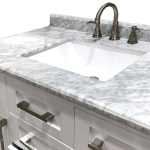
Ceramic Tile Countertops
Cover the countertop with a water-resistant covering such
as plastic. (The countertop itself cannot be kashered;
therefore, it must be covered.)
Formica or Plastic Countertops
There are different opinions as to whether formica or plastic countertops can be kashered for Pesach. Consult your rabbi for guidance.
Composite Stone (e.g. Quartz)
Composite countertops are often made with a combination of crushed quartz (stone) and resin (plastic). Rav Belsky zt”l maintained that even those who are strict regarding kashering plastic may be lenient to kasher composite countertops, because the overwhelming majority is stone. For steps of kashering see section on Granite or Stainless-Steel countertops. If the composite countertop also includes ceramics, it cannot be kashered.
Granite or Stainless Steel
It is preferable to kasher a countertop by pouring boiling water in conjunction with an even melubenet (a heated stone).
To kasher with an even melubenet: Attach a stone to a clamp, and heat the stone on the stove for a minute. While pouring the boiling water on the counter, move the stone along on the counter with the boiling water so that the water is reheated on the surface of the counter. The stone may need to be reheated on the stovetop several times, since it can cool down quickly.
Dishwasher
Consult with a halachic authority, since kashering dishwashers is a
complicated process.
Electric Mixer

Because of the difficulty in cleaning out the housing of the mixer from
fine particles of flour, one should not use their year-round mixer on
Passover.
The mixer blades, however, can be cleaned and kashered through boiling (see “Small
Utensils” below).
Fabric items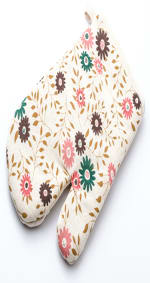
- Remove any pieces of food that are attached.
- Wash items with detergent in the washing machine set on “hot.”
- Items should be checked afterwards to make sure that no pieces of food remain attached.
Freezer, Refrigerator, Pantry and Food Shelves

- Clean thoroughly, paying special attention to the edges where crumbs
may get trapped. - Line all surfaces with paper or plastic. (Note: Refrigerators and
freezers will operate more efficiently if holes are poked in the lining to
allow for air flow.)
High Chair for Babies
- Wipe down the seat, legs and bars with a soapy rag.
- Cover the tray with contact paper
Hot Water Urn 
Urn only used for heating water:
Run hot water through the water tap for 10 seconds, while pouring
boiling water from a kettle over the water tap.
Urn also used to warm food (e.g. to warm challah):
Must be put away and not used for the Pesach.
Keurig Coffee Maker
For those who kasher plastic. (Those who do not kasher plastic
should put away their coffee maker for Pesach.)
Kitchen Gloves
See Fabric Items above.
Microwave

For those who kasher plastic. (Those who do not kasher plastic
should put away their microwave for Pesach.)
- Clean thoroughly and do not use for 24 hours.
- Remove the glass turntable and replace it with a new, kosher-for-Passover surface.
- After 24 hours, fill a styrofoam cup with water and boil it in the microwave for 10
minutes. - Refill the cup and move it to another spot. Boil it in the microwave for 10 more
minutes. - Tape cardboard or contact paper over the interior glass window pane for the
duration of Passover.
Oven
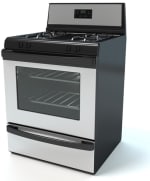
Self-cleaning ovens
- Remove any visible food.
- Complete the self-cleaning cycle with the oven racks in place.
(This accomplishes libun gamur – burning.)
Non-self-cleaning oven
- Clean all surfaces (walls, floor, doors and racks) thoroughly with a
caustic cleanser (e.g. Easy Off). Pay special attention to the thermostat, oven window,
and edges of the oven chamber. Black discoloration that is flush with the metal need
not be removed. - Oven should not be used for 24 hours.
- Place racks in the oven and turn on the oven to broil (highest heat) for 60 minutes.
(This accomplishes libun kal – light burning.)
Note 1: A broiler pan that comes in direct contact with food should not be used.
Note 2: The method of kashering described above is based on the ruling of Rav
Aharon Kotler zt”l. However, Rav Moshe Feinstein zt”l ruled that the oven must either
be kashered with a blow torch, or an insert should be placed in the oven. Consult
your rabbi for guidance.
Pots, Silverware & Other Small Utensils

- Utensils must be first cleaned and left unused for 24 hours.
- After 24 hours, immerse utensils into a pot of boiling water that is
on the fire.
• The pot can be non-Passover, provided it is clean, has not
been used for 24 hours, and water is first boiled in the pot and
discarded.
• Small utensils should be immersed one at a time.
• Larger items can be submerged in the water one part at a time. - Allow the water to return to a boil before the next item is placed in the pot.
- Rinse utensils in cold water after the immersion.
Note 1: Rolled lips, seams or cracks, which cannot be cleaned, will require torching of
those areas before boiling.
Note 2: Metal tea kettles must be kashered just as any other pot must be kashered.
Although it is uncommon for anything but water to be put into a tea kettle,
nevertheless, it must be kashered. Tea kettles often sit on the stove, and it is common
for them to get spritzed with hot food.
Sink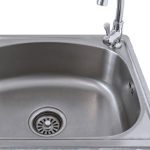
Stainless steel sink
- Remove the drain.
• It is recommended that the drain be replaced with a new drain for Passover. If this is difficult, it may be used if the drain has large holes that can be completely scrubbed clean.
- Kasher the sink:
• First, clean the sink and do not use it for 24 hours.• It is preferable to kasher the sink by pouring boiling water (iruy) in conjunction with an even melubenet (a heated stone). To kasher with an even melubenet: Attach a stone to a clamp, and heat the stone on the stove for a minute. While pouring boiling water over all surfaces of the sink, move the stone along the sink with the boiling water so that the water is reheated on the surface of the sink. The stone may need to be reheated on the stovetop several times, since the stone may cool down quickly.• In lieu of kashering with a heated stone, some will just kasher their sinks by pouring boiling water and then using a tub or sink insert.
Ceramic sink
A ceramic sink cannot be kashered, and therefore must be cleaned and covered as
follows:
- The sink should not be used with hot water for 24 hours.
- Remove the sink drain.
• It is recommended that the drain be replaced. If this is difficult, and the drain has large holes and can be completely scrubbed clean, then it can be kashered. The drain should not be used for 24 hours and should have boiling water poured over it from a Passover kettle.
- Clean the sink thoroughly and make sure it is completely dry.
- Cover the sink with 2 or 3 layers of contact paper or foil. (It is best to purchase a
sink insert instead of covering with paper or foil.)
Sink Faucet (including instant-hot)
- Detach any filters or nozzles.
- Pour boiling water over the faucet.
Stovetop
Electric Stovetop
- Clean the stovetop surface well and cover with foil.
- Turn on the burners until they glow red. (This
accomplishes libun – burning.)
Gas Stovetop
- Clean the stovetop surface and grates well and do not use for 24 hours.
- Cover the stovetop surface with foil.
- Either replace the stovetop grates with new ones for Passover, or burn them out in
the oven at 550° F for one hour. (This accomplishes libun kal – light burning.)
Glass Stovetop
A glass stovetop cannot be kashered, and therefore must be dealt with as follows:
- Clean the stovetop surface well and do not use for 24 hours.
- During Pesach, pots should not be placed directly on the stove surface, but rather
an aluminum (or other metal) disk should be placed directly under the pots.
One should not cover the entire glass top surface, as this might cause it to overheat
and crack.
Table
- Clean the table well.
- Cover the table with two layers. One of those layers should be
water-resistant (such as plastic).
Tablecloth
See Fabric Items above.
Warming drawers
Typically, warming drawers do not get to the 550°F temperature required for libun
kal (light burning). Therefore, unless one is experienced in kashering with a torch,
warming drawers are not recommended for use on Pesach.
Water Cooler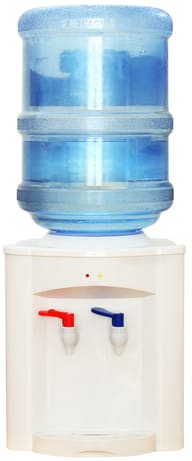
- Pour boiling water over the tap for 10 seconds.
- Replace the water bottle with a fresh bottle.


